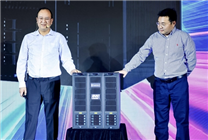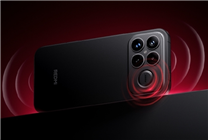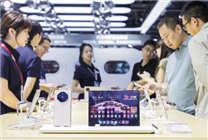Introducing the "BI Explorer-1/BIE-1": A Groundbreaking Brain-Inspired Computer
Summary:
- The debut of the "BI Explorer-1/BIE-1" marks a significant advancement in brain-inspired computing technology.
- This ultra-small, mobile computer offers unmatched efficiency and performance while significantly reducing costs and energy consumption.
- Its innovative algorithms allow for advanced learning capabilities and a more interpretable AI experience.
On October 28, a revolutionary advancement in computing was unveiled at the "2025 Brain-like Intelligent Computing Forum" held in the Guangdong-Macao Deep Cooperation Zone, Hengqin, Guangdong. The "BI Explorer-1/BIE-1," the world’s first ultra-compact brain-inspired computer, showcases original algorithms that mimic human cognitive processes.
A Compact Powerhouse
The "BI Explorer-1," informally called "Smart One," boasts exceptional specifications—remarkably compact at the size of a mini refrigerator, representing just one-tenth the volume of conventional supercomputing equipment. The innovative design allows for outstanding stability and flexibility in deployment across various settings, including homes and small offices.
Internally, the device features three nodes equipped with a staggering 1,152 CPU cores, though the specific type remains undisclosed. The computer harnesses 4.8 TB of DDR5 memory, 204 TB of storage, and an impressive array of 12 PCIe 5.0 buses, alongside 40G high-speed network interfaces. It employs a liquid cooling system that ensures the CPU temperature remains below 70 degrees Celsius, even during complex reasoning tasks.
Redefining Computational Efficiency
The technological breakthrough behind this remarkable device is its proprietary brain-like algorithm known as the Intuitive Neural Network (INN). This innovation not only accelerates model training and inference but can also handle large datasets effectively. The INN provides an interpretable reasoning mechanism that addresses the often-criticized ‘black box’ nature of traditional AI models.
Key features of the INN include:
- Interpretable Learning: The INN merges numerical and symbolic data, effectively mimicking the human brain’s processing capabilities. This enhances understanding and explanation of decision-making processes.
- Efficient Learning from Small Samples: This machine can derive rules from minimal data, supporting continuous learning without losing previously acquired knowledge.
- Multi-modal Data Processing: It can adeptly handle text, image, and speech information, enabling comprehensive analysis through data fusion.
Cai Jiang, a director at the Guangdong Institute of Intelligence, remarked on the model’s groundbreaking ability to provide AI with reasoning capabilities, transforming it from a reactive system into an explanatory one.
Unmatched Training and Performance Metrics
During an on-site demonstration, "Smart One" achieved the training of tens of billions of tokens in merely 30 hours using a single CPU node. Performance metrics indicate training speeds reaching 100,000 tokens per second and inference speeds hitting 500,000 tokens per second. These impressive figures rival those of traditional computing clusters, which typically rely on multiple high-end GPUs.
Significantly, the innovation can reduce hardware costs by approximately 50%, while energy consumption plummets by nearly 90%. The acoustic footprint is comparable to that of a standard office environment, making it a suitable device for various settings.
Academician Zhang Xu from the Chinese Academy of Sciences highlighted that traditional AI systems often require vast supercomputing centers with extensive investment and energy use. The advent of brain-inspired computing bridges this gap, potentially democratizing high-performance computing access.
Diverse Applications
The "BI Explorer-1" is versatile, with applications spanning finance, healthcare, manufacturing, education, and more. It can analyze health data for the elderly, monitor children’s learning progress, and adapt workflows to individual operational styles in office environments.
The device is equipped with a comprehensive toolchain, empowering users without technical backgrounds to create sophisticated intelligent applications.
A Growing Field with Future Potential
While brain-inspired computing is gaining traction, it remains in early development stages. Notable examples include Intel’s Hala Point and SpiNNaker 2, both of which showcase the promise of this innovative technology. Other prominent companies such as iFlytek and Sugon are also expanding into this field.
However, challenges remain. The architecture of brain-inspired computing is poised for evolution, with a transition from technological validation to widespread application projected to take 3-5 years.
As the field continues to expand and innovate, "Smart One" stands at the forefront, exemplifying the transformative potential of brain-like intelligent systems that can bring high-performance computing within reach for everyday users. The future may very well see a world where sophisticated computation is not only powerful but also accessible to all.







